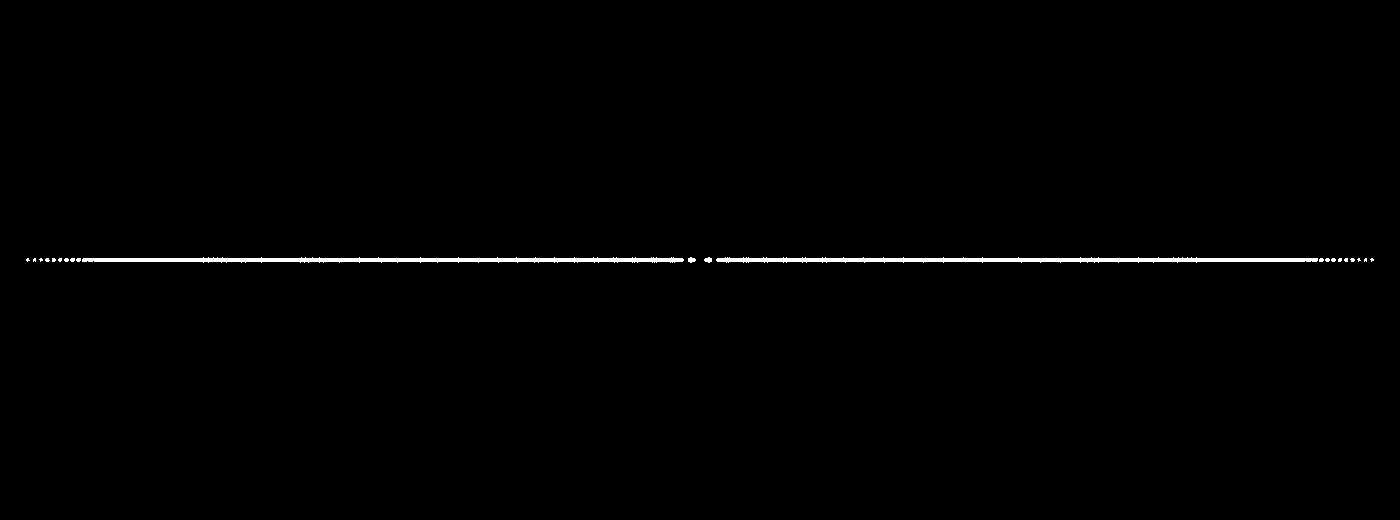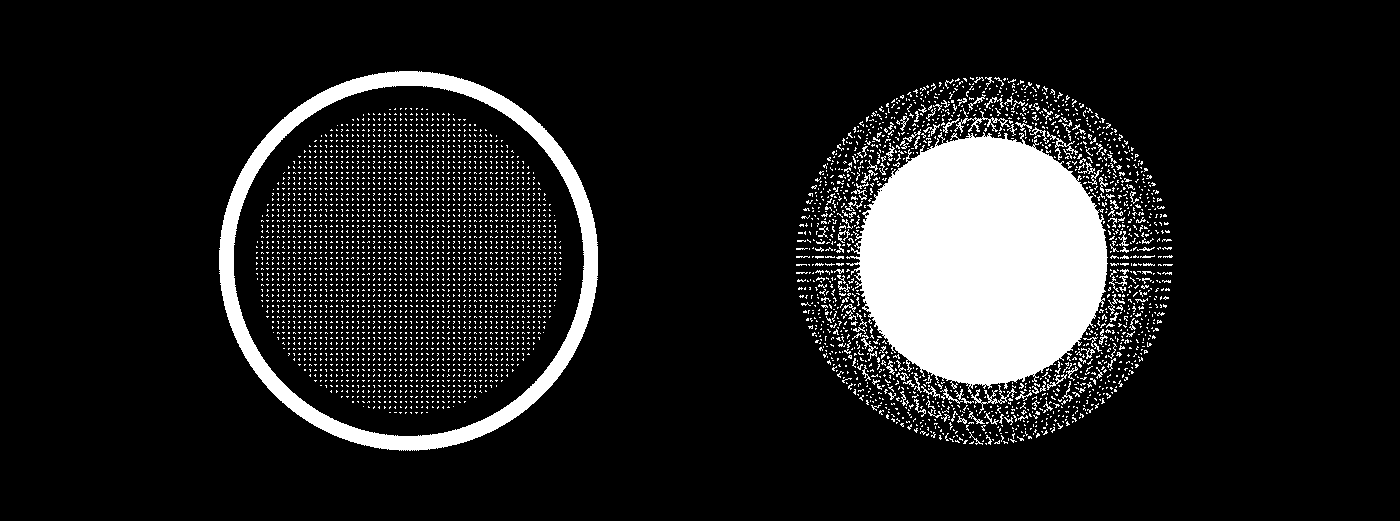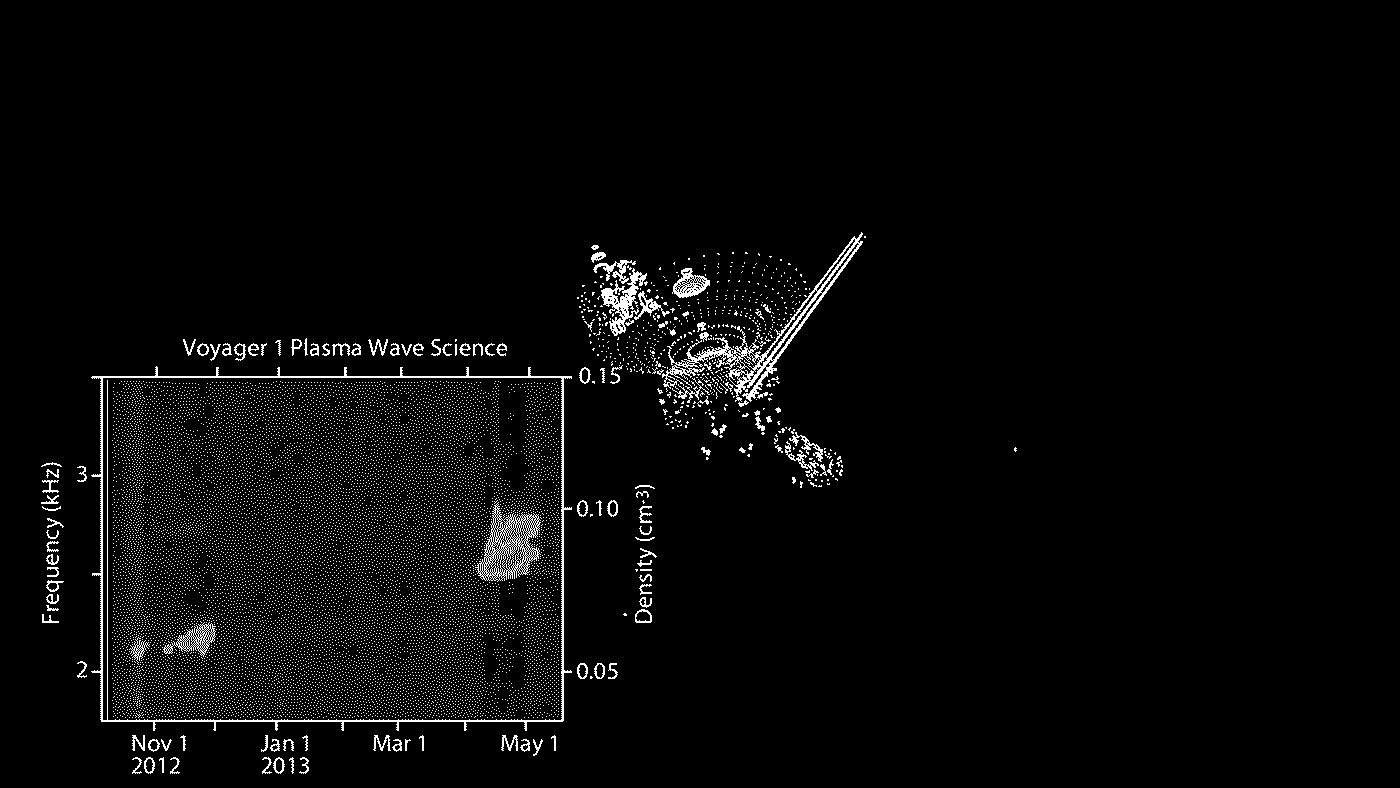
Big Bang
The great explosion that gave rise to our universe was completely silent. Sound needed both matter and gravity to exist. The silence of the explosion at the beginning of the universe was due to the fact that space was non-existent. There was no medium through which sound could travel. However this primordial silence didn’t last long. For 760,000 years after the Big Bang, the Universe was dense enough for sounds to pass through before expanding into the vast silence. Within science fiction, space has often been depicted as a noisy place of beeping satellites, rumbling engines and deafening explosions; however there is of course barely any sound at all. From sound everywhere after the big band to sound barely anywhere. "In space, no one can hear you scream." Sound can't be carried in the empty vacuum of space without any molecules for the audio vibrations to move through.

First hearing — bony fish
The first organisms capable of sensing sound inhabited the oceans of earth 400 million years ago. Bony fish such as the Panderichthys are thought to be the first organisms to hear sound and their ears developed through the spiracle or gill that allowed for breathing underwater. This emergent sensing allowed the organisms to build awareness of objects at great distances, often within the deepest and darkest parts of the ocean. Hearing helped organisms flee from predators and hunt prey long before sound was used for communication amongst species.

Developed mammal ears - spectrum of hearing
As these organisms emerged from the oceans, they transitioned to the harsh, violent atmosphere of earth’s surface. Warped under gravity and forced to acclimatize to dry conditions, it would be another 100 million years before their hearing fully adapted to their new environment.
The difference in density between water and air made it impossible for sound waves to reach the inner ear and instead they were mostly reflected. During this transition, the first four-legged creatures used their lungs as ears. As their lungs filled with air, they would rattle and buzz in sync with sound waves acting as an inner ear.
And so the earth’s surface climate nurtured the emergent auditory systems of a spectrum of organisms. The outer ear we see in birds and mammals blossomed from the middle ear of amphibians. These complex labyrinthian structures provide channels through which sound can be registered and through which inter-species communication could flourish. Human to human, human to non-human and vice versa.

Sound recording
Hearing allows us to store the impression of sound within our echoic memory. Auditory stimuli are stored for longer in memory than visual stimuli because auditory stimuli can only be heard once rather than scanned continuously. Echoic memory helps us communicate and develop comprehension and so technologies of recording developed into an essential catalyst for the composition language and interactions. In 1877, Thomas Edison invented the phonograph. The results were barely audible and the first recorded words were ‘Mary had a little lamb’. Edison viewed his invention as a form of telephone repeater and swiftly moved on to develop other technologies including the incandescent light bulb. The idea of recording music was not high on his list of priorities and it is suggested that he was either tone deaf or hard of hearing. At the same time, in 1875, Alexander Graham Bell transmitted the first sound vibrations between two receivers. The first radio broadcast occurred on December 23, 1900. The registration of sound was no longer constrained to time and space now that it could be recorded, transmitted and reproduced across vast distances.

Sound transmission
On 12 April 1961, at 6:07 am the Vostok 1 spacecraft was launched from Baikonur Cosmodrome. Aboard was Gagarin, the first human to travel into space. At 6:18 am Gagarin reported, "The craft is operating normally. I can see Earth in the view port of the Vzor. Everything is proceeding as planned". This was the first audio message received from outside earth’s atmosphere created by a human and marks the continued extension of our hearing technologies out into the cosmos.

Voyager one
Voyager One was a space probe launched by NASA on September 5th 1977 with the purpose of studying the outer solar system. After 44 years, the probe still communicates with the Deep Space Network. It is currently situated almost 15 billion miles from earth and is the most distant so-called "artificial" object from Earth. In 2025 its generators will no longer supply enough electric power to operate its instruments and NASA expects to lose contact with the probe and we will lose our interstellar hearing.
Voyager One is a prosthetic ear to a collective noosphere body of 8 billion people, extended further into the cosmos than any of our current organs. This shared ear is more durable in space than any individual human. Humans have yet to spend longer than 2 years in space in comparison to the half century Voyager One will have remained active for.

Environment bounds comparing
Voyager One sends interstellar whistles back to the earth that help us to calculate the density of the interstellar medium. As we consider the density of interstellar space with ears tethered by radio communication to a collective body billions of miles away, we recognize that we have developed into an organism much like the Panderichthys, again, as we familiarize ourselves with the distant and dark medium we are passing through.

Potential for new sensory capabilities to develop on top of our essential functions
1. We have constructed the economic, political and technological conditions to extend what can be heard and how our environment is composed. These structures of planning, sensing and accounting will be essential in implementing the necessary technologies for regulating the planet's carbon to establish a viable planetarity and avoid extinction. We must architect the first mass inhalation of carbon to precede the first exhalation. In other-words bringing about a new planetary breathing capability from a planetary hearing capability that originated from breathing.
In developing this new breathing technology for our planet and coordinating our first inhalation, we do not yet know what additional sensory capability we could be headlessly ushering in through this infrastructure. What kind of sensing could grow from within the labyrinth of breathing that opened up from hearing from breathing.
2. In terraforming the planet's respiratory infrastructure our individual hearing capabilities may recede in favor of more intimate, conjoined and gory forms of sensory transmission and reception.
There may be a decline in planetary scale computation for individualized audio-based cultural signaling in favor of culture on slower more unrecognizably collective scales and climate sensing and engineering on faster more recognizable scales.
Temporalities of listening may extend beyond human lifetimes into centuries and millennia. Currently we can only perceive sounds that oscillate 20 times per second however in listening to black holes, we must be prepared to listen for an oscillation that completes once every 10 million years.
There may be a decline in planetary scale computation for individualized audio-based cultural signaling in favor of culture on slower more unrecognizably collective scales and climate sensing and engineering on faster more recognizable scales.
Temporalities of listening may extend beyond human lifetimes into centuries and millennia. Currently we can only perceive sounds that oscillate 20 times per second however in listening to black holes, we must be prepared to listen for an oscillation that completes once every 10 million years.
3. Humans' insatiable appetite for experience and archiving will likely lead them to continue constructing deeper echoic memory gardens of trauma, pleasure and wisdom even as the planet transforms beyond all recognition and their outer ears shrivel from their shiny bald oversized craniums.
Planetary asphyxiation in pursuit of the individualized pleasure death drive must be avoided. We must attempt to terraform without inducing some traumatic tinnitus that would make sensation tortuous. A terraformed planet may come to represent a closed system of deafening absence. An anechoic chamber where all that can be heard and felt is the nauseating fleshiness of our being as we attempt to extend outwards towards the soothing hums and erie rattling of the cosmos.

Team:
Altyn Mustafina
Danil Arefev
Danya Orlovsky
Sean Greaves
Project made for the first week of Strelka Institute the Terraforming program under the supervision of Benjamin H. Bratton and Nicolay Boyadjiev




